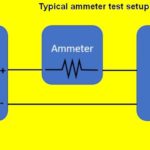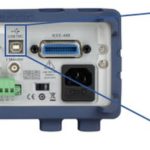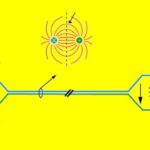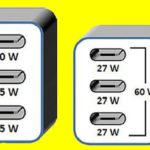The operational amplifier (op-amp) has been one of the most successful integrated circuits. A type of differential amplifier with high gain, the differential inputs and single output enable this small, inexpensive IC to use negative feedback in a wide variety of applications, in which its gain (hundreds of thousands of times higher than the difference between the two inputs), bandwidth and input and output impedances are set by external circuitry.

Due to the enormous gain, a small difference between inputs causes the amplifier output to closely approach the supply voltage. In the rarely used open-loop configuration, the device is said to be saturated when this difference is greater than the supply voltage.
In open-loop configuration (no negative feedback) the op-amp is a comparator. Positive feedback can be implemented for regeneration. In closed-loop configuration, circuit performance is stabilized and becomes far more predictable. By applying a portion of the output to the inverting input, the gain is reduced to a sensible level. Gain and response are then determined largely by the feedback network instead of by opamp qualities.
A point to note is that there are special types of op-amps, including high frequency (10s to 100s of MHz) units, current-difference, or trans-conductance op amps.
Note also that there is no ground pin on an op-amp, and op-amps can operate from a single supply. But some op-amps are specified as requiring positive and negative power supplies. This is because the input is assumed to be at ground and ac input signals deviate above and below ground.
Noteworthy as well is that the inputs to the op-amp must stay within the power supply (op-amps dubbed single-supply types allow the input to deviate down to the negative rail, usually ground). So negative voltages are not allowed at the inputs with this single-supply specification.
There are several key parameters that help determine the suitability of a given op-amp to a task at hand. Tests can establish these parameters, and the most important of them can be found in op-amp specsheets. Power-supply rejection ratio (PSRR) identifies the op-amp sensitivity to variations in the power supply. This specification is listed in decibels (dB) where every 20 dB rise is a ten-fold increase in the ratio. So, a 60-dB value means a one-volt change in the power supply will cause a 0.001-V change in the output. PSRR depends on the actual power supply voltage as well as the frequency of the noise. Higher operating voltages and lower noise frequencies generally bring better PSRR figures.
Op-amps that interface with digital logic (which sometimes causes significant power supply noise) generally should have good PSRR ratings. The parameter may not be as important for op-amps in analog designs working from a quiet supply.
The current needed to power the op-amp is the supply current, Is, also called the quiescent current. It does not include current through external components or any output current.
The input resistance, Rin, indicates how much load the op-amp places on the input source. It’s generally kept as high as possible with values in the hundreds of megohms typical. Some newer op-amps have input resistances listed as greater than 10 teraohms (1 teraohm = 1,000,000 MΩ). Op-amp input capacitance is usually not specified but is on the order of picofarads and is mostly due to the leads.
Older op-amp specsheets may provide only an input bias current, Ib, rather than an actual input resistance. Ib is the current needed to drive the inputs and can yield input resistance via Ohm’s law and the supply voltage.
The input offset voltage, Vos, and input offset current, Ios, are a measure of op-amp inaccuracy and should be close to zero. If both inputs to the op-amp are zero, the output should also be zero. But op-amps aren’t perfect, so there will be some residual voltage at the output. A point to note is that the gain of the overall circuit will affect the op-amp output. Thus a circuit with a gain of 100 will boost error by a factor of 100, which explains why offset voltages and currents are referred to the input rather than to the output. Specifically, the definition of offset error is the voltage (or current) applied to the input to force the output exactly to zero.
Offset errors are generally not problematic for ac circuits because the effect manifests as a fixed dc error. Because ac circuits are generally capacitively-coupled, the dc goes away. But large gains ( ≥1,000) can turn a 5-mV Vos into a 5-V dc error at the output, possibly commanding an op-amp output voltage exceeding the supply voltage and causing clipping. On the other hand, offset errors are an issue in dc applications because it is impossible to separate out the real dc signal from the dc error.
The common-mode voltage range (CMVR) spells out limits to the input voltage that can be applied to the op-amp. Most new op-amps have “rail-to-rail” inputs which allow use of any input voltage up to and including the V+ and V- rails. Older op-amps tend to limit the input voltage to something less than the rails.
Subtilties can arise in op-amps having a CMVR less than the supply rails. Op-amps using a single supply might be limited to working with inputs that never reach ground potential, and orchestrating the input this way may be difficult. Also note some older op-amps invert the signal if it goes more negative than the negative CMVR.
Another spec called the common-mode rejection ratio (CMRR) refers to an error in the balancing of the inputs. Theoretically, connecting the inverting and non-inverting inputs of an op-amp together should cause a zero output regardless of the voltage applied to the inputs. But this is only in theory.
CMRR is specified in dB and is often 60 to 80 dB or higher. A CMRR of 60 dB means there can be an input error of 0.1% in the balance between the inputs. A 10-V signal applied to both inputs, or Vcm (with 60 dB of CMRR), would appear to be a 10-V signal applied to one input and a 5.010-V signal applied to the other. The actual output error depends on the gain of the circuit.
The CMRR error is especially important when measuring a small signal embedded in a large one. For example, current measurements often involve measuring the voltage drop across a small-valued resistor in the current path. The task may entail measuring fractions of a millivolt in the presence of 10 or more volts.
The op-amp large signal voltage gain (Av or Avo) indicates the maximum amplification possible without any feedback. (Thus if Avo is 100 dB, the op-amp can’t provide a gain above 100 dB.) As stated previously, this amplifier configuration is rarely used. Sometimes Avo is stated as a ratio of V/mV.
The output short-circuit current, Isc, defines the op-amp max current output. Isc often is in the 20 to 40 mA range though some early op-amps handle much less.
Op-amp speed-related parameters include slew rate (SR), unity gain bandwidth (BW), and gain bandwidth product (GBW). SR measures how fast the output can change, usually in V/μsec. But SR is affected by the effective op-amp gain. That’s because a signal that is amplified has an amplified SL as well. For example, a 1-V signal amplified by a factor of 10 has an output that must move from zero to 10 V in the same time the input moves from 0 to 1 V. Thus, the maximum output frequency of a typical op-amp directly depends on the gain of the circuit.
The point at which the op-amp can’t keep up with the signal and the input and output are the same voltage is the point where Av = 1, or unity gain. The highest operating frequency is also the bandwidth of the amplifier, BW.
The direct relationship between SR and Av leads to a calculation for GBW. It can be seen that halving the frequency allows the circuit to have twice the gain. Thus, the product of gain and frequency is always the same. This is the GBW. Also note the BW and GBW are the same for the special case where the gain is one.
Gain also affects voltage noise, En, and current noise, In, because both rise with increasing gain. Thus an amplifier with a gain of 100 will have 100 times the noise that is specified. And noise is related to the system bandwidth. As such, noise parameters are defined with units of square-root-Hz in the denominator. Wide-band circuits will have more noise than those with a narrow bandwidth.
Op-amp distortion parameters include total harmonic distortion (THD) listed as a percent value, usually on the order of 0.01% or better. Another method of specifying how faithfully the op-amp amplifies a signal is with the transient response parameter, measuring how the op-amp reacts to an abrupt change. Virtually all op-amps exhibit some amount of overshoot with overshoot listed as a percentage of the output signal. Figures of several percent or higher are typical.





Leave a Reply
You must be logged in to post a comment.